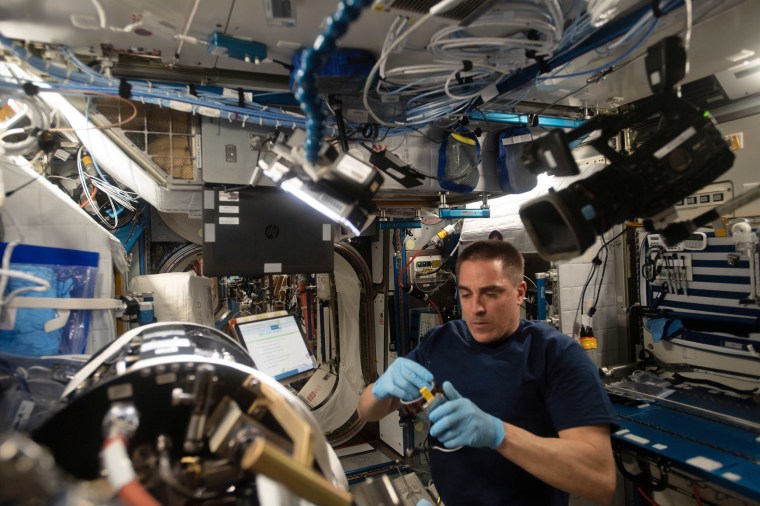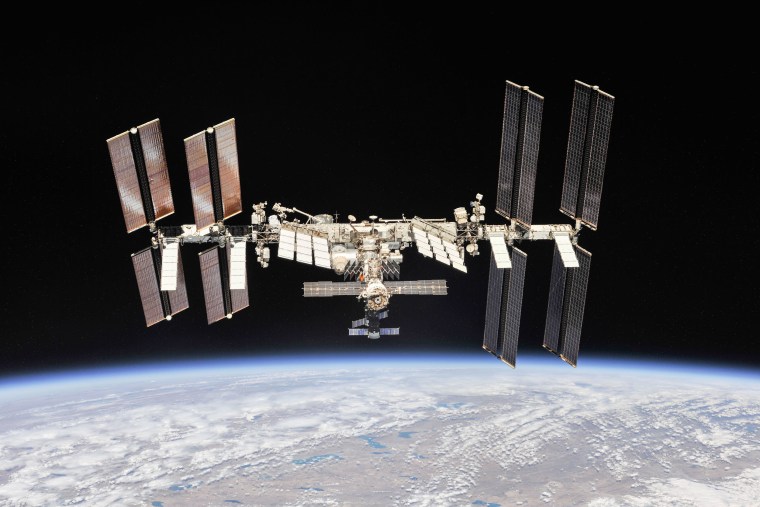The International Space Station marked a significant milestone on Monday: 20 years in orbit as humanity’s only inhabited outpost.
What was once just three pressurized rooms – America’s Unity module, with Russia’s Zvezda (“Star”) and Zarya (“Dawn”) modules – has grown into a complex of 16 chambers and a sprawling array of solar panels, connecting trusses, robot arms and instruments.
And like any complex piece of machinery, it's prone to aging. Some of the earliest parts of the station have been in orbit since the start — and they're starting to show it. Recent malfunctions have included a persistent air leak and the breakdown of a critical life-support system, and one cosmonaut has said the Russian modules are “exhausted.”
There's no cause for alarm, experts say. Malfunctions on the station are normal, and the recent problems haven’t endangered the crew. And learning to deal with malfunctions is part of the mission – experience that will be vital for future human space journeys.
In the latest incident, the Russian space agency Roscosmos reported cosmonauts had repaired their oxygen generator – a key life-support system in the Zvezda module.
The system failed as a Soyuz spacecraft arrived and increased the crew to six. But it was working again the next day, and a second oxygen generator in America’s Destiny module kept working normally. In addition, the air already inside the ISS contains enough breathable oxygen for several weeks.

Roscosmos said the latest leak and oxygen system breakdown posed no danger. “All the station systems work nominally; there is no threat to the crew and ISS safety,” a Roscosmos spokesperson said.
The breakdown came as cosmonauts finally tracked down and sealed an air leak on the ISS that has persisted for more than a year – also in the aging Zvezda module.
Roughly half of the space station was built and is maintained by Russia, while NASA maintains the rest, so it might seem like a lack of maintenance in the Russian half could threaten the other. Gennady Padalka, who holds the record of 878 days for the longest stay on the ISS, told Russian media outlet RIA Novosti that the Russian half is wearing out: “All the modules of the Russian segment are exhausted.”
But space analyst and former NASA engineer Keith Cowing, the editor of NASA Watch, said many non-Russian systems on the space station also routinely suffer malfunctions, and learning to deal with them is part of the mission.
The recent breakdowns were no threat to the crew, and there are always enough spacecraft at the ISS to evacuate it in an emergency, including a Soyuz “lifeboat.”
Statements that Russian equipment on the ISS is wearing out may be sly marketing to boost funding for the space station, which is harder to obtain in Russia than in America, he said.
“In the U.S. we're blessed with apparently solid support for the space station,” he said. “But on the Russian side they've had budget cuts, and that does affect things.”
Russian space policy analyst Andrey Ionin said that some of the Russian systems on the ISS are getting old, but that’s to be expected after so long in orbit. He added that the crew are trained to deal with problems.
“The profession of an astronaut is dangerous, but these people are specially trained for many years to act in emergency situations," Ionin said in an email.
The first parts of the ISS were launched into orbit in 1998, with the expectation they would last at least 15 years. The space station’s mission has now been formally extended to 2024, and it’s proposed to extend to at least 2028.
Such extensions are normal in space missions as long as the machinery keeps working, said Martin Barstow, a professor of astrophysics at Leeds University in the U.K. who chairs a group that oversees British science experiments on the space station.
“When you plan a program, you plan for a specific period of time,” he said. “But many missions go well beyond the original plan.”
NASA has also vouched for the Russian systems.
“NASA … will continue working closely with its International Space Station partner Roscosmos to operate the station, and we are confident in our partnership and their work,” NASA spokesperson Stephanie Schierholz said. “The station system is robust.”
Cowing said the experience of maintaining the aging space station will be vital as human spaceflights begin to distant planets on spacecraft that will probably never return to Earth.
“As we explore space, we are going to have to learn how to work with older spacecraft that may go somewhere and not come back, like the stuff we send to Mars,” he said.
